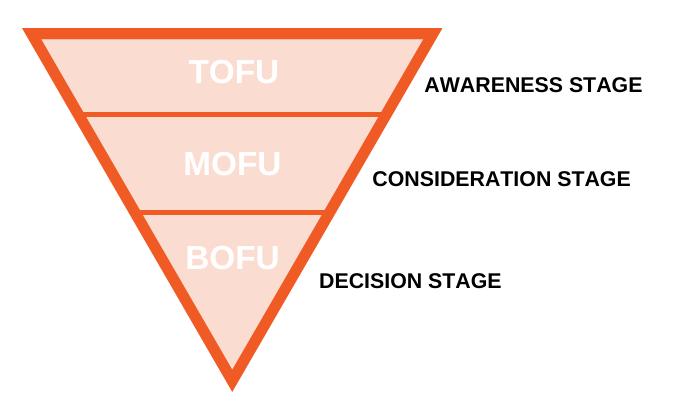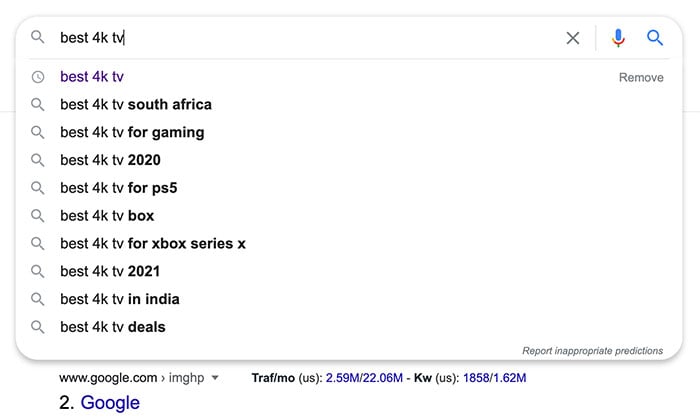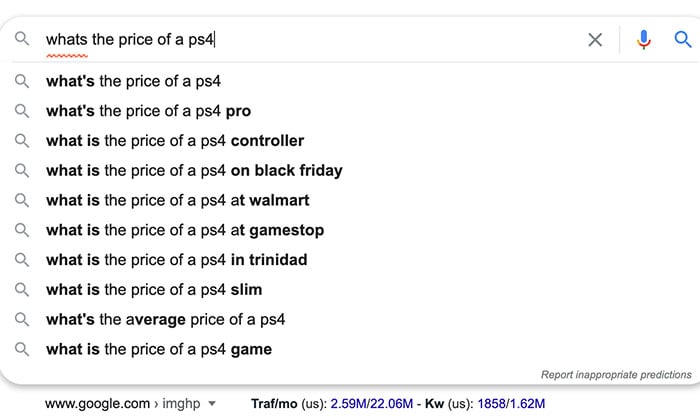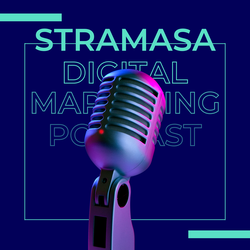What is a Customer Journey Mapping Ads Strategy?
As the name implies, journey-based advertising is the strategy of implementing a series of paid ad campaigns focused on the stages and touchpoints of the customer journey. You can break down every customer journey into high-level phases; these are typically levels of intent that a user passes through as they research their problem or opportunity and viable solutions. These phases are sometimes called the awareness, consideration and decision stages (also known as the buyer’s journey).
For example, let’s imagine you own a car dealership. When your prospective customer is starting to research the type of vehicle they want, they are in the awareness stage of their journey. In this stage, they might see your display ad on a local news site with a message about “the top-rated SUVs for safety.” Once they click through on the ad, they land on your dealership’s website where they see a listing for the top 3 models based on safety ratings.
When your prospective customer begins to drill deeper into researching each model’s benefits, they are in the consideration stage. Ultimately, they will narrow down their decision to a single model, and they might go back to Google to search for dealerships who sell them nearby.
Ultimately, your prospective customer is ready to buy the SUV they have decided on, so they navigate back to your website to get a quote, indicating they are in their decision stage.
Historically, paid ads have been thought of as a tactic that sits at the beginning of that journey, focused on driving more brand awareness. Once someone has engaged with the ad, the ad’s job is then over – relying on the website to take over from there.
With the introduction of increased tracking and targeting abilities on ad networks, however, marketers are realizing that paid ads are more than just a tactic for delivering a brand message measured in impressions and click-throughs. Ads are also equipped to support a strategy focused on lead generation and conversion beyond the ad itself. When you shift your thinking from just an awareness play to a conversion strategy, you have taken the first step to developing a journey-based ad strategy.
From there, you want to focus your ad strategy on messages that nurture a user incrementally closer to the next conversion or engagement in that customer journey. Using targeting and tracking pixels, you can bring these audiences closer to becoming a customer with each click, form submission or page view. An example of this strategy applied could be:
Display
These ads should be targeted to your ideal audience with the objective of initially exposing a broad number of people to your brand with a message focused on the questions they have early on in their research. In our example above, these could be the ads that live on the local news site to bring a lead in at the awareness stage.
Search
Search campaigns should be focused on the questions that appear in the early, middle and later stages of their research process, segmented by keywords, indicating the progression through low to high levels of intent to convert. Again, using the SUV example, these search terms targeted to each phase of the journey could be:
- Awareness – Top SUVs by Safety Rating
- Consideration – [Model] Features
- Decision – [Model] Dealer Near Me
Remarketing
These campaigns then serve as the glue between each stage of that journey by focusing on driving each cohort from the awareness to consideration stage, and then the consideration to decision stage. Remarketing could also include ads focused on any abandonment or drop-off even later in this journey (think: those coming up for renewal or repurchase). If we were to implement a remarketing strategy for the car example, it might look something like:
- Targeting those who have viewed the Top SUVs by Safety Rating page with an ad around comparing the three models.
- Targeting those who have drilled into one of the models with an ad focused on getting a quote.
Why does it work?
When you serve the right message at the right time, people are not only more apt to pay attention, but also more apt to retain the information. For example, if you were to serve an ad with a call-to-action to “request a quote” to an audience that is hearing about your brand for the first time through that ad, you should have the expectation that the percentage of converting visitors would be very low due to the disconnect between the two levels of intent.
Instead, if you marry the targeting and messaging of your ads to the stage of the customer journey that the prospect is in, you can expect to have a much higher conversion rate because your ad becomes infinitely more contextual and relevant to the user.
We understand that your paid advertising can be a complex web of campaigns. If you are considering testing out a journey-based ad strategy, we would suggest starting by evaluating where in your customer journey you are seeing the biggest drop-off today, and from there, implementing a journey-focused ad strategy designed to reduce the drop-off by motivating users to move to the next stage of their journey with your brand.
How to Create a Customer Journey Map for Your PPC Campaigns
It’s tough to see site visitor numbers go up and sales stay the same. However, keep in mind that what those visitors are saying isn’t a hard “no,” but rather a “not right now.”
When you use customer journey mapping with your PPC campaigns, you can learn more about what a person needs to hear from you to eventually get them to say yes. To do that, you need a marketing funnel for each part of the customer journey.

What strategies should you be applying at each stage with your PPC campaigns? Let’s break it down.
Top of Funnel (TOFU) PPC Campaigns
The top of the funnel is the stage of awareness. Your future customers are not aware of you yet, and your number one goal is to create brand awareness and educate prospects.
How do you make people aware of your brand with PPC? Here are a few ways:
- Display ads: Use display ads to give away free value. You want to give potential customers quick wins with blog posts, whitepapers, or e-books. For your targeting methods, use keyword contextual targeting. It matches keyword-targeted ads to sites within the Google Display Network. You can also use topic targeting to make sure your ad appears on relevant websites, apps, and videos.
- YouTube ads: Having over 2 billion users, YouTube is one of the best places to grow your brand awareness. Here’s how to grow your business using YouTube ads with a complete breakdown of the different ad formats and their success rates.
- Social media ads: Depending on where your audience hangs out, ads on Facebook, Instagram, or Pinterest can help with brand awareness. Facebook offers the most robust targeting, allowing you to reach people interested in specific topics or accounts similar to people already engaging with your brand.
- Google Ads: Someone in the awareness stage won’t use branded keywords. Instead, they’ll use broad words and phrases related to their problem. For example, “which TV is best” or “hiking backpack.” Using different keywords at each stage of the sales funnel can help optimize your PPC campaigns.
The key performance for your PPC campaign in the awareness stage is brand recognition. You’re not going to convert a visitor into a customer yet. This campaign is an investment to move the user down the funnel and eventually close the sale.
You want to focus on metrics like:
- bounce rate
- time spent on site
- reach
- impressions
- CPM (cost per 1,000 impressions)
Middle of Funnel (MOFU) PPC Campaigns
Once someone enters the middle of the funnel, the person is interested in making a purchase. These buyers are now aware of their problem and are actively looking for a solution. Your PPC ads become more specific as the search for a solution narrows.
- Google Ads: Ensure you’re creating PPC ads for people actively searching for your product or service. For example, if a customer is looking to buy a TV, their searches will contain more qualifying terms such as “plasma TV,” “4k TV,” or “best 4k TV for gaming.”

- Remarketing: Remarketing is a powerful component of PPC marketing. You can use it to serve ads to blog readers, users who have spent X amount of time on your site, or people who have downloaded your TV comparison guide.
- YouTube: YouTube has a video ad sequence campaign you can use to generate awareness around your business. You can set it up as a campaign subtype under “product and brand consideration” goals in Google Ads. It allows you to create a custom sequence or use a sequence template.
The key performance metric for your PPC campaign in the consideration stage is to get people to understand your product and want to buy it. To do this, give them all the information to make an informed decision and move them to the next stage.
You want to focus on metrics like:
- clicks
- CPC (cost per click)
- views
- new user conversions
- new user conversion rate
Bottom of Funnel (BOFU) PPC Campaigns
BOFU is the decision phase of the customer journey. Your prospect has identified a problem, done the research, and is ready to make an informed purchase. At this stage, your PPC traffic is hot. Users know who you are and are prepared to convert. Your PPC ads will start to get more niche and revolve around high-intent keywords.
Consider the following strategies for BOFU:
- Target your brand name: If the customer is searching for your name, congrats! All your hard work in TOFU and MOFU has paid off. They’re aware of your brand and what you offer. The search phrases you want to target are specific and include your brand name like “buy LG 4k TV.”
- Focus on high-intent search ads: In the BOFU stage, make sure your PPC ad keywords are targeting high-intent search terms like “buy,” “what’s the price of,” competitor names, and location-specific terms.

- Utilize remarketing: Set up PPC remarketing campaigns for customers who have viewed a product or abandoned their cart. You can also offer a deal to lure them back to your site and complete the purchase.
The key performance metric for your PPC campaign in the decision stage is conversions. This is when people are ready to buy, and you should focus on revenue metrics like sales and return on ad spend (ROAS).
Tips for Integrating Your Customer Journey Mapping Into Your PPC Campaigns
Now that you know all about customer journey mapping and how to use it in your PPC campaigns, here are some things to keep in mind:
- Spend time crafting your buyer personas: The more you understand your customers, the better you can map their journey and tweak your PPC campaigns.
- Write better ad copy: Do something that will grab their attention and stop the user mid-scroll. You want to make them feel like you’re reading their minds and ultimately push them deeper into your funnel.
- Dedicate time to keyword research: Using the right keywords is the difference between a successful PPC campaign and a flop. You want to make sure you’ve mapped out your keywords to the different phases, and you’re encouraging the user to make a purchase.
- Build your remarketing lists: Don’t put off fine-tuning your remarketing. When you combine this essential part of PPC with customer journey mapping, it’s integral to make sure you’re guiding the user down your funnel. You can create remarketing audiences with Google Analytics and use them for your ads.
- Test, analyze, and tweak: You can only find leaks in your funnel and fix them by constantly testing and monitoring your results. Tweak your ad messaging, look at your conversion path analytics, and adjust your strategy until you have a winning formula for your PPC campaigns.
Conclusion
To sum it up, combining your PPC campaigns and the buyer’s journey is all about serving the right message to the right person at the right time.
You want to make sure you’re providing the correct content and information whether someone enters your funnel at the top, middle, or bottom.
Once you’ve created this flow in your PPC campaigns, you’ll see more flow in your business, as well as predictability, results, and less money wasted on a leaky sales funnel.
Follow our Linkedin account for more updates.
Get in touch
Got a project or do you have any questions for us?
Let’s have a virtual coffee and talk about your challenge.
We are a full-service agency offering strategic marketing services
Our industry experience and market research make the difference
With any industry, understanding how to most effectively approach the market is crucial to growing a business. If you’re looking for help from a digital marketing agency it pays to choose one that already understands your industry and your customers. Take a flying start with Stramasa as your B2B digital agency partner thanks to our industry insights, local & global learnings and understanding of your ideal brand positioning for your target audience in your sector. We’re always eager to deepen our expertise & learn about new industries so let’s connect!
Request An Introduction Meeting
Book A Consultation
Ready to grow your business together? Let’s connect!
Contact & Availability
Email: info@stramasa.com
Monday to Friday: 9:00 AM to 10:00 PM
Saturday: 9:00 AM to 5:00 PM
Sunday: 9:00 AM to 5:00 PM
Let’s Connect
Our expertise makes the difference

Our international offices & local teams
NA – United States (USA) – New York (NYC), Miami, Orlando, Florida, Denver, San Diego, Chicago, Houston, Austin, Texas, Boston, Los Angeles, Washington, Seattle, Philadelphia, Portland, Ohio, Minneapolis, New Jersey, Cleveland, Columbus, Richmond, Indianapolis, Phoenix, Arizona | Canada – Toronto, Vancouver, Montreal, Calgary, Edmonton, Ottawa EMEA – Europe – Brussels – Belgium, London, Manchester, Dublin, Brisbane, Bristol, Newcastle – UK | Glasgow, Scotland | Ireland | Dubai – U.A.E. |Turkey | Berlin, Hamburg Germany | Amsterdam, The Netherlands, Barcelona Spain, Rome, Italy | Beijing, Chennai, China APAC & ASEAN – Manila – Makati – Philippines | Osaka, Tokyo, Kyoto – Japan | India – Mumbai, Delhi, Bangalore | Singapore | Bali, Jakarta, Indonesia | Kuwait | Pakistan | Jeddah, Saudi Arabia | Hong Kong | Thailand | Australia – Melbourne, Sydney LATAM – Brazil














